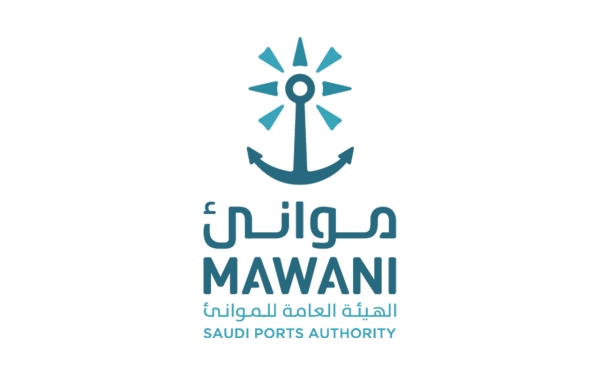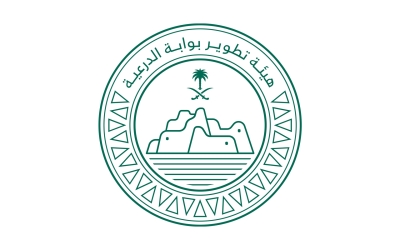

The Saudi Ports Authority (MAWANI) is responsible for managing, operating, and developing the seaports of the Kingdom of Saudi Arabia, except for economic cities and military ports. Its tasks also include developing regional and international maritime trade, transporting passengers, ensuring the safety of maritime navigation, and issuing marine licenses, laws, and regulations that organize the operations of ports.
MAWANI was established as the General Organization of Ports in 1976. It was privatized due to its importance in 1997. In 2018, a resolution was issued to transform it into an authority.
Saudi Ports Authority has a general legal personality with financial and administrative autonomy, and is organizationally linked to the Minister of Transport and Logistic Services, which presides over its Board of Directors.
The Saudi Ports Authority, which headquarters is located in Riyadh, is a member of the International Port Community Systems Association (IPCSA) and the International Association of Marine Aids to Navigation and Lighthouse Authorities (IALA).
Significance of MAWANI
The Kingdom is strategically located in the middle of three continents. A wide network of seaports spans the coasts of the Red Sea and the Arabian Gulf, as the largest port network in the Middle East. Due to the importance of this sector, the Kingdom has decided to establish an independent entity that supervises and develops ports, according to the best international standards.
In June 2021, the Ministry of Transport and Logistic Services launched the National Transport and Logistics Strategy (NTLS), which aims to transform the Kingdom into a global transport and logistics hub. Saudi ports were one of its pillars, given their role as the main developer of the maritime transport system. Consequently, the Saudi Ports Authority developed its strategy to align with the targets of NTLS, as part of the objectives of Saudi Vision 2030. The updated strategy will enhance the Kingdom's position as a global logistics center by raising the logistics performance index and increasing the capacity of container handling in ports.
Over 95 percent of the Kingdom's exports and 70 percent of its imports pass through Saudi ports. They encompass 291 berths, with a capacity of about twenty million containers per year until 2022, with more than 1.1 billion t. During 2020 till 2022, seventeen new shipping services were added.
In 2022, the authority added a new shipping line linking Jeddah Islamic Port with ten international ports, with the aim of expanding shipping operations in exports and imports across all ports of the Kingdom. A second shipping line was also developed to connect King Abdulaziz Port in Dammam with four international ports, equivalent to a carrying capacity of 1,740 TEUs.
Ports managed by MAWANI
Nine ports are currently managed by the Saudi Ports Authority, with a total area of about 297 km. Six of these ports are commercial, whereas the other three are industrial.
Ports managed and operated by MAWANI include:
- Jeddah Islamic Port: With a capacity of 130 million tons, it is the second-largest Saudi port, and is one of the busiest maritime navigation roads. It handles more than 75 percent of the cargo coming through Saudi ports, and covers an area of 12.5 km with sixty-two docks and five terminals.
- King Abdulaziz Port in Dammam: It is the second-largest Saudi port on the coast of the Arabian Gulf and the Kingdom's main port. It is also the second-largest port in the Kingdom in terms of area, covering 19 km with forty-two docks, four terminals, and a capacity of 105 million t.
- King Fahad Industrial Port in Jubail: It is characterized by its location on the coast of the Arabian Gulf with an area of 6.8 km, a capacity of 70 million t, thirty-four docks, and five terminals. It was established to keep up with the Kingdom's transformation from an exporter of raw materials into a producer of petrol and gas.
- Jubail Commercial Port: Due to the depth of its adjacent waters, this port is characterized by its carefully chosen location on the coast of the Arabian Gulf. It possesses a fleet of marine vessels, such as tugboats, guidance boats and mooring boats. It covers an area of 4 km, with a capacity of 36 million t, and includes sixteen docks, and four terminals.
- King Fahad Industrial Port in Yanbu: With a capacity of 210 million t, it is the largest among Saudi ports in terms of capacity, and also in terms of loading crude oil, refined products and petrochemicals on the coast of the Red Sea. It covers an area of 6.8 km, with thirty-four docks and ten terminals.
- Yanbu Commercial Port: It is one of the oldest ports overlooking the Red Sea. It is also the closest Saudi port to Europe and North America in terms of area, docks, terminals and capacity. It covers an area of 4.2 km, takes in a capacity of 13.5 million t, and includes twelve docks and two terminals.
- Jazan Port: With a capacity up to 5 million t, it is considered the smallest Saudi port. However, it is characterized by its location, which is close to the eastern and western trade roads between Europe, the Far East, the Arabian Gulf, and East Africa. It covers an area of 4.2 km, and includes twelve docks and one terminal.
- Duba Port: It is the second smallest Saudi port in terms of capacity, which is up to 10 million t. It is also the closest Saudi port to the Suez Canal and the ports of the Mediterranean, as it covers an area of 11.2 km, and includes six docks and three terminals.
- Ras Al-Khair Port: As the largest port of its kind in the Kingdom, it overlooks the coast of the Arabian Gulf and is the newest industrial port in the Kingdom. It is one of the most prominent pillars of the Saudi economy to support the vital programs and projects of the public and private sectors. It covers an area of 19.2 km, accommodates a capacity of 35 million t, and includes fourteen docks and five terminals.
Related quizzes

